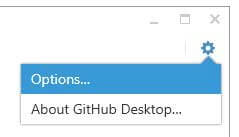
You can even clone your private Bitbucket repositories directly from GitHub Desktop now.įound this post helpful? Then check out further posts on. And voila! You can now use GitHub Desktop seamlessly for all the operations on your Bitbucket repositories.
#How to sync github desktop password#
Enter your Bitbucket username, and the App Password saved previously. Click pull origin and your local repository will be updated and the same as the remote repository. Optionally, to publish a public repository, deselect Keep this. Optionally, add a description for the repository.

In the 'Publish Repository' window, in the 'Name' field, type the desired name of the repository or use the default current local repository name. git will track and version your files, GitHub stores this online and enables. What this does is it pulls the remote changes to your local repository. In the repository bar, click Publish repository. GitHub Desktop will ask for your Bitbucket credentials. Go to your GitHub desktop and make sure your current repository you are working with is selected. Once the repository is added, make a small change and try to push a commit. If you don’t have a cloned Bitbucket repository on your local machine already, you can follow the steps here.

You will see a password show up on the screen. Typically, repository read-write, and pull request read-write permissions are enough.

Go to your account on Bitbucket, click on the Profile icon in the top right corner, and select ‘Personal Settings’ from the menu.Once downloaded, skip all the steps requiring you to set up an account.
#How to sync github desktop download#
Download GitHub Desktop if you don’t have it already.Now, in order to connect Bitbucket to GitHub Desktop, you need to follow the below steps: I’ve recommended GitHub Desktop to 4 of my colleagues, and they have never looked back. If your organization uses Bitbucket, you may still want to try out GitHub Desktop for making commits and syncing them with the remote origin. GitHub Desktop, in my opinion, is the most user-friendly desktop app for version control (don’t worry, this post is not sponsored by them).


 0 kommentar(er)
0 kommentar(er)
